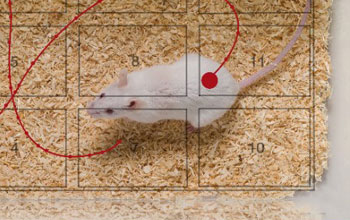
 Animal research should always be performed following Russel & Burch’s principles of 3Rs.
Animal research should always be performed following Russel & Burch’s principles of 3Rs.
These fundamental principles were initially defined by William Russell and Rex Burch in the book The Principles of Humane Experimental Techniques more than 60 years ago.
Nowadays, these principles are embedded in our everyday lives and decisions, guiding and inspiring scientists for more ethical use of animals in testing. They are continuously driving organizations and regulatory bodies to implement specific rules to govern these principles.
Looking at the descriptions formulated by one of the most recognised international organizations regarding this topic (https://www.nc3rs.org.uk/the-3rs), the definitions of the 3Rs are:
|
Replacement |
Methods which avoid or replace the use of animals |
Accelerating the development and use of models and tools, based on the latest science and technologies, to address important scientific questions without the use of animals |
|
Reduction |
Methods which minimize the number of animals used per experiment |
Appropriately designed and analyzed animal experiments that are robust and reproducible, and truly add to the knowledge base |
|
Refinement |
Methods which minimize animal suffering and improve welfare |
Advancing research into animal welfare by exploiting the latest in vivo technologies and by improving understanding of the impact of welfare on scientific outcomes |
In this regard, we believe that our Digital Ventilated Cage system promotes both the “Reduction” and “Refinement” principles.
DVC® promotes “Reduction” through automated objective data collection, reduces errors, and bias from subjective manual data collection. This could potentially reduce required sample sizes (fewer animals) due to the effect of having large amounts of automated data.
“Refinement” principle is entirely covered by the essence of the DVC® itself. Thanks to specifically designed modules, the DVC® focuses on supporting and complementing animal welfare checks performed by animal caretakers and researchers. Indeed the DVC® objectively collects indicators of animal health and well-being. It does this by interpreting animal locomotion data occurring in cage without disturbing the occupants and looks for subtle changes predictive of health status deprecation or the onset of a disease.
Last but not least, we are committed to support initiatives and to organize specific events to discuss and promote the dissemination of the 3Rs principles.
In this regard, the digital forum organized and hosted by Tecniplast S.p.A. was the first event of its kind where scientists, facility managers, and in-vivo life science manufacturers openly presented data about home cage monitoring from cage/animal tracking to evaluate behavior in the home cage.
The three key take-home messages were:
Taken together, such an open platform supported by a great social event and organization not only impressed the participants but helped to open communication channels, allow networks across institutions to help address the reproducibility of data. It has driven the next meeting to include presentations and discussions which focus on new “unseen”, “unexpected” and, “disruptive” scientific results and methods.